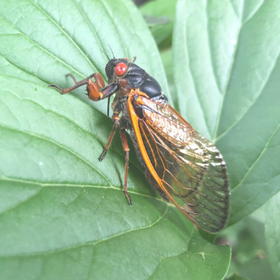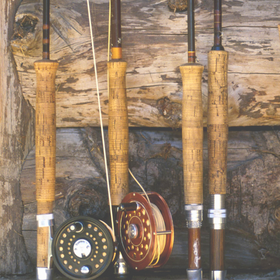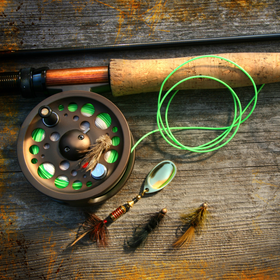Large, bushy dry flies practically leap out of my fly box, seemingly screaming me, me, me. My heart beats faster reaching for these as the anticipation of a large rainbow trout erupting from the water, hook in mouth racing down the riffle, while I hold on for dear life, and wait for a moment where I can truly begin to wrestle this beauty.
Ok it doesn’t always play out like that, but as I have said before, if we knew we would catch a fish on any particular cast, the thrill of fishing would long be gone. It is the anticipation and then the reality of it where the excitement lies. And nothing quite produces this anticipation like big bushy dry flies.
Call them what you will, rough water attractors, hair wings, or big bushy flies this classification of flies probably catch more trophy sized trout that all others. The most popular of this style include the wulffs, humpys, and stimulators. They come in a variety of styles, run the gamut of colors, have accessories like a sports car, and can be dressed as bushy or as slim as the tyer desires. However they are noted for their bushy profile, long and high floats, and easy visibility. In modern times they have found usage as a strike indicator, and are perfect for the dry/wet dropper set up.
However they also can be a curse to the uninitiated fly fisher. If not rigged up correctly you can end up with a tangled mess at the tippet, or a fly that doesn’t present itself at all. Or on the other end it could drop from the sky like a rock, and spook every fish within a hundred yards. So what is the secret to fishing these legends?
Unfortunately like almost everything in fly fishing, therefore everything in life, there is no hard and fast rules. However there are some tips to fishing these large dry flies. Depending on your fishing experience you need some fairly stout tippet, and probably a 5 wt or even 6 wt rod. The big bushy flies are just not aerodynamic they have a quite a bit of drag in fact, and it take some heft to turn these babies over and lay them out. The tippet needs to extend on the forecast so it needs some stoutness at its butt. But not too much, for you don’t want the fly splashing down, or your line hitting with a wicked slap.
It might take some practice, adjustment, and patience. While it is probably easier that casting a sz. 24 midge, it is also different, especially if that is what you are used to. But once the basics are down, you will find the extra heft an advantage and be able cast these eye popping trout feasts farther, to more fishable water. If the wind has kicked up, you can even go stouter on the tippet, as the broken water surface will hide the tippet more, and while casting most dry flies would be pointless these flies can still be fished.
Many people instinctively reach for streamers or nymphs during high water or inclement weather, big bushy dry flies are often an excellent choice. Casting to slack water, back eddies, behind rocks, wherever trout lie out of the current, will often produce nice fish. During normal water levels, fish these in riffles much like a nymph, for unbelievable strikes that you might never have thought could happen. Also during hatches of smaller flies, when you have nothing that matches the hatch or for whatever reason the fish just refuse your offerings, try a big fly, oftentimes in their gluttony fish just simply will hit it. If they’re on the feed, more is better, and these flies definitely offer more.
As an attractor is how these flies earn their place in every fly fishers vest however. Big, easy to see and buoyant, they are a joy to fish and can be fished virtually everywhere.
As fly fishing becomes more and more specialized, I find it reassuring these general patterns oftentimes representing nothing more than something alive, can still reel in those big ones. I carry one whole large box dedicated to nothing but big bushy flies, and have them close at hand whether I am fishing for trout, bass, or steelies.




